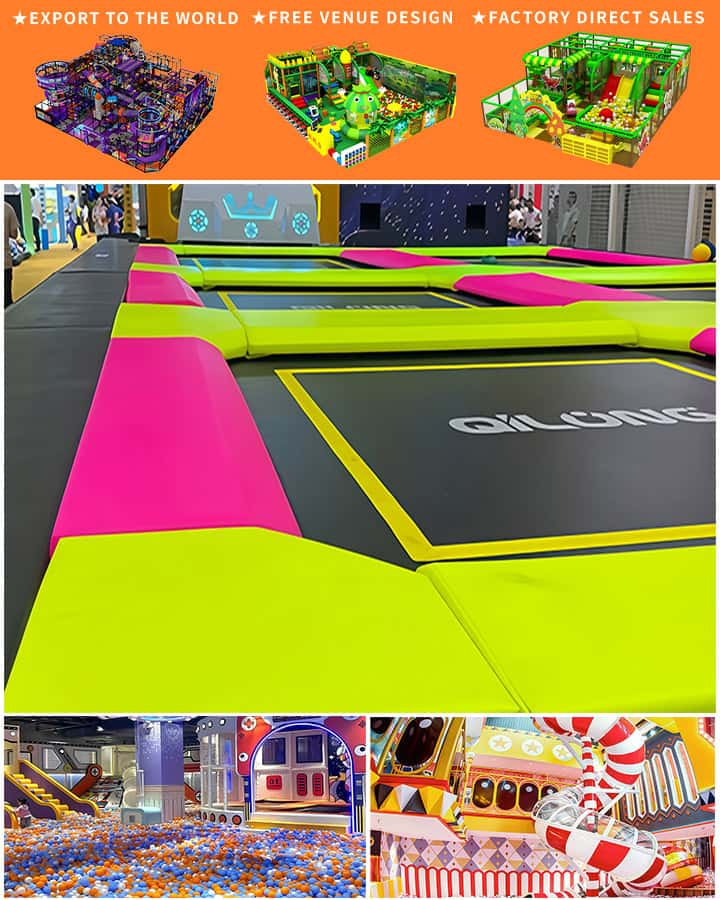Indoor play areas have become increasingly popular as parents and caregivers look for ways to keep children entertained and engaged in a safe, controlled environment. Whether you’re setting up a play space at home or managing a daycare center, choosing the right indoor play area equipment is crucial for both fun and development. Here’s a guide to help you navigate the process of buying indoor play area equipment that meets your needs and exceeds expectations.
Understanding Your Needs
Before diving into the vast market of indoor play area equipment, it’s essential to understand the specific requirements of your space and the children who will be using it. Consider the following factors:
- Age Group: Different age groups require different types of equipment. Toddlers might benefit from soft play structures and sensory toys, while older children might enjoy climbing frames, slides, and interactive games.
- Space Dimensions: Measure your indoor space carefully. Ensure there’s enough room not only for the equipment but also for safe movement around it.
- Safety Standards: Always prioritize safety. Look for equipment that complies with relevant safety standards and certifications to minimize the risk of injuries.
Key Types of Indoor Play Area Equipment
Once you’ve assessed your needs, explore the various types of equipment available:
Soft Play Equipment: Ideal for younger children, soft play equipment includes foam blocks, ball pits, and cushioned play structures. They provide a safe environment for crawling, jumping, and climbing.

Climbing Frames and Slides: These are perfect for developing physical coordination and strength. Make sure they have guardrails and non-slip surfaces for added safety.
Interactive Toys: Educational and interactive toys like building blocks, puzzles, and role-playing kits can enhance cognitive skills and creativity.
Trampolines: Mini trampolines with safety enclosures can be a fun way for kids to expend energy. However, ensure they come with padded edges and a stable frame.
Sensory Play Equipment: Items like sensory tables, light-up toys, and water play sets are excellent for stimulating young minds and encouraging exploration.
Tips for Buying Indoor Play Area Equipment
Research and Reviews: Start by researching various brands and reading customer reviews. This will give you insights into the quality, durability, and safety of the equipment.
Budget: Set a realistic budget based on your needs and the number of children who will use the equipment. While it’s tempting to go for the most feature-rich options, balance is key.
Warranties and Returns: Check if the manufacturer offers warranties or guarantees. Understanding the return policy can save you hassle in case the product doesn’t meet your expectations.
Customization Options: Some suppliers offer customization options to fit your specific space requirements. This can be particularly useful for uniquely shaped rooms or specific activity zones.
Installation and Maintenance
Once you’ve purchased the equipment, ensure proper installation to maintain safety and longevity:
Professional Installation: For complex structures like climbing frames, consider professional installation to ensure all components are securely anchored.
Regular Inspections: Conduct regular inspections to check for wear and tear, loose parts, or any potential hazards.
Cleaning and Hygiene: Maintain hygiene by cleaning the equipment regularly, especially soft play items which can accumulate dust and germs.
Conclusion
Buying indoor play area equipment requires thoughtful planning and consideration to create a safe and enjoyable environment for children. By understanding your needs, exploring the different types of equipment available, and following practical buying tips, you can set up an indoor play area that provides endless fun and developmental benefits. Remember, the ultimate goal is to create a space where children feel secure, stimulated, and happy. Happy playing!




